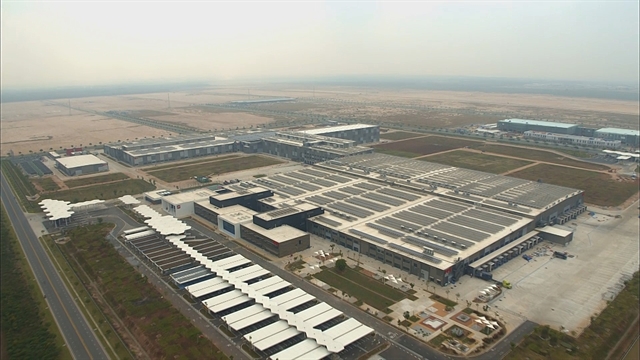 Economy
Economy

HÀ NỘI — The Ministry of Industry and Trade (MoIT) plans to consolidate traditional markets in rural areas while developing a large number of convenience stores and diversifying types and methods of modern business.
These are part of targets set in the project to develop domestic trade in 2021-25 period.
According to the ministry’s assessment of 2016-20, the local market has become important for the momentum of sustainable development. Total retail sales and revenue from services saw a high growth rate of 9.2 per cent annually from VNĐ3.5 trillion (US$150.7 million) in 2016 to VNĐ4.9 trillion in 2019. The growth was relatively equal among economic regions.
Total retail sales of consumer goods and services per capita increased from VNĐ38 million in 2016 to VNĐ51.2 million in 2019 per person.
The contribution of the domestic market to GDP has increased, from 10.5 per cent in 2016 to 11.16 per cent in 2019. It showed the domestic market plays an important role in product consumption. At the same time, it has provided jobs as it employed about 6-7 million workers (accounting for more than 12 per cent of the total workforce in the country), contributing to poverty reduction and ensuring social security.
Over the past five years, supply and demand connection has also performed well, contributing to stabilising prices in the market, through linking to create a stable source of goods between domestic manufacturers and large distribution systems nationwide.
The proportion of Vietnamese goods in retail distribution systems is high with 90 per cent for distribution systems owned by domestic enterprises (90 – 93 per cent at Co.opmart, 90-95 per cent at Satra and 96 per cent at VinMart). The proportion is more than 70 per cent at foreign supermarkets and commercial centres (90 per cent at Lotte and Big C and 82 – 85 per cent at AEON and Citimart).
However, the MoIT said the overall growth rate was not high compared to potential and the domestic market still has plenty of room to grow.
To effectively implement the five-year socio-economic development plan for 2021-25, the ministry has set goals and solutions for domestic trade to continue to play an important role in the economy.
The plan hopes to increase the added value of the domestic trade sector’s contribution to GDP by 13.5 per cent in 2025.
The average annual growth rate in 2021 - 25 of the total retail sales of consumer goods and services (including the price factor) is expected to hit about 9 - 9.5 per cent a year, while the proportion of total retail sales of goods by type of modern trade by 2025 will reach 35-40 per cent.
Another goal is to gradually complete commercial infrastructure such as shopping malls, supermarkets, trade-service areas, convenience stores, specialised stores, logistics centres, wholesale warehouses and fair centres in big cities.
To complete the targets, the ministry will enhance the efficiency of State management over the market; strengthening market regulation capacity for key commodities. At the same time, it will strengthen the management of goods circulation in the market. It hopes to ensure 90 per cent of businesses in provinces and cities no longer display and sell smuggled goods, counterfeit goods, banned goods or goods infringing intellectual property rights by 2025. All businesses nationwide shall list prices and sell them at listed prices.
Among the 10 regions with the largest market size in the country, HCM City continued to lead with VNĐ1.08 trillion in 2019, accounting for 22.1 per cent of the national market and two times higher than the second-highest Ha Noi with VNĐ512 trillion last year, accounting for 10.03 per cent of the total. — VNS




